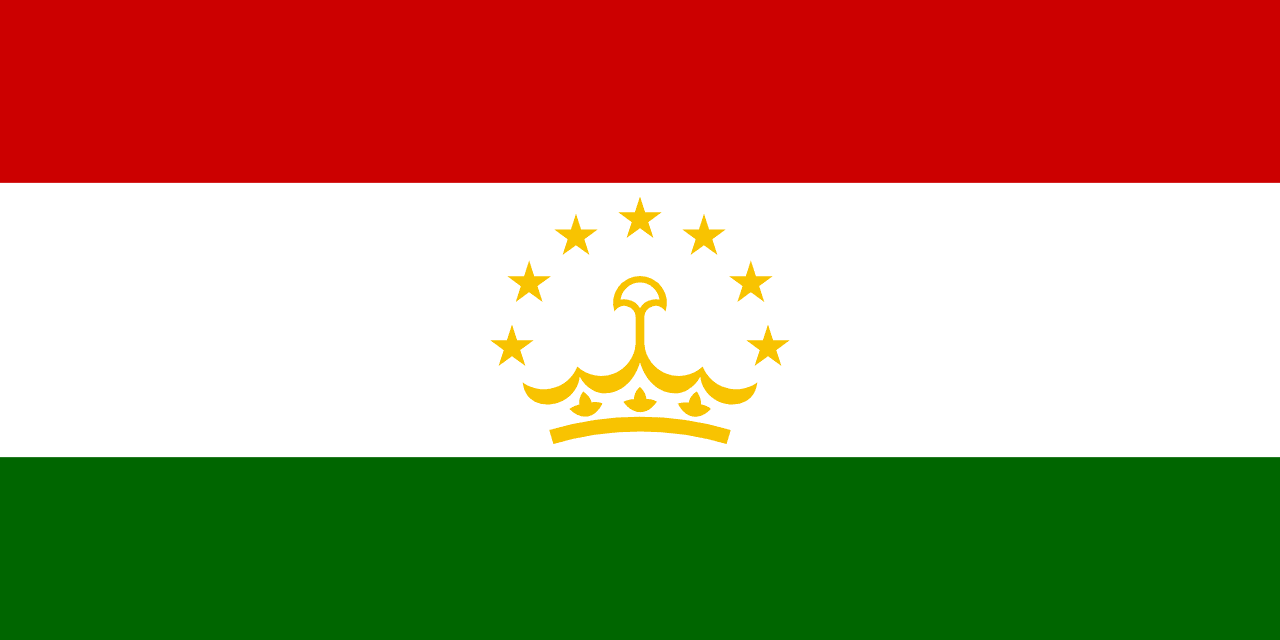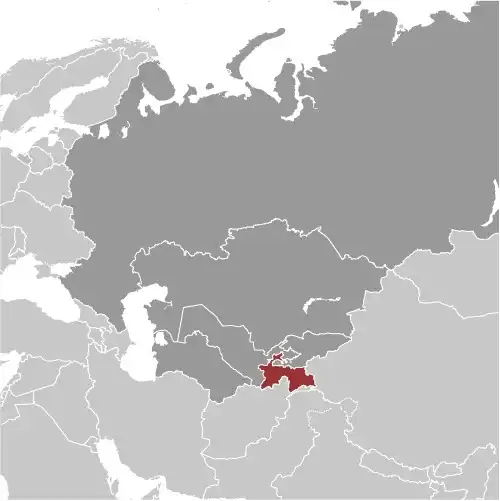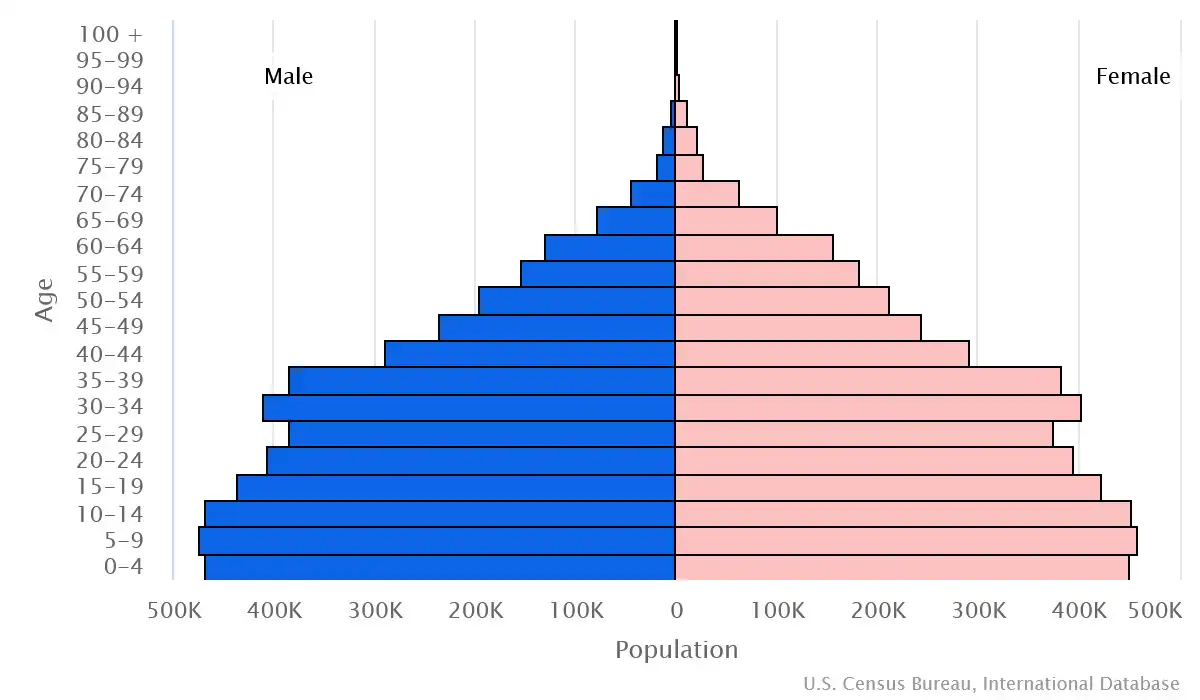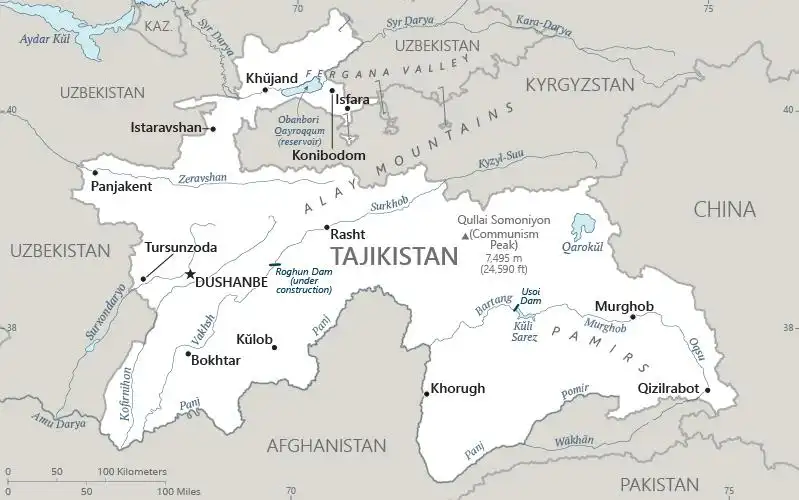
Tajikistan Country Profile
Key Facts of Tajikistan

| Government type: | presidential republic |
| Capital: | Dushanbe |
| Languages: | Tajik (official) 84.4%, Uzbek 11.9%, Kyrgyz 0.8%, Russian 0.5%, other 2.4% (2010 est.) |
Tajikistan Demographic Data
Ethnic Groups in Tajikistan(2014 est.)
Religious Groups in Tajikistan (2014 est.)
Age pyramid of Tajikistan

Tajikistan Economy Statistics
Economic overview of Tajikistan
lower middle-income Central Asian economy; key gold, cotton, and aluminum exporter; declining poverty; sustained high growth; very limited private sector; substantial illicit drug trade; significant remittances; environmentally fragile
Tajikistan Real GDP (purchasing power parity) in Billion $
Tajikistan Real GDP per capita in $
Tajikistan's Exports & Imports in billion $
Top 5 Import Partnerin 2022 (80%) of Tajikistan
Top 5 Import Commodities in 2022 of Tajikistan
- refined petroleum ⛽
- garments 👕
- wheat 🌾
- cars 🚗
- natural gas 💨
Top 5 Export Partnerin 2022 (72%) of Tajikistan
Top 5 Export Commodities in 2022 of Tajikistan
- gold 💰
- precious metal ore 🪙
- cotton 🧵
- copper ore 🟧🪙
- aluminum 🪙
Geography of Tajikistan
Map of Tajikistan

Land and Water Distrubtion of Tajikistan
Natural Resources of Tajikistan
- hydropower 💧⚡
- some petroleum 🛢️
- uranium ☢️
- mercury ⚗️
- brown coal ⚫
- lead 🪙
- zinc 🔩
- antimony 🏺
- tungsten 🔧
- silver 🪙
- gold 💰
Climate inTajikistan
mid-latitude continental, hot summers, mild winters; semiarid to polar in Pamir Mountains
History of Tajikistan - a Summary
The Tajik people came under Russian imperial rule in the 1860s and 1870s, but Russia's hold on Central Asia weakened following the Revolution of 1917. At that time, bands of indigenous guerrillas (known as "basmachi") fiercely contested Bolshevik control of the area, which was not fully reestablished until 1925. Tajikistan was first established as an autonomous Soviet Socialist Republic within the Uzbek Soviet Socialist Republic in 1924, but in 1929 the Soviet Union made Tajikistan as a separate republic and transferred to it much of present-day Sughd Province. Ethnic Uzbeks form a substantial minority in Tajikistan, and ethnic Tajiks an even larger minority in Uzbekistan. Tajikistan became independent in 1991 after the breakup of the Soviet Union, and the country experienced a civil war among political, regional, and religious factions from 1992 to 1997.
Despite Tajikistan's general elections for both the presidency (once every seven years) and legislature (once every five years), observers note an electoral system rife with irregularities and abuse, and results that are neither free nor fair. President Emomali RAHMON, who came to power in 1992 during the civil war and was first elected president in 1994, used an attack planned by a disaffected deputy defense minister in 2015 to ban the last major opposition party in Tajikistan. RAHMON further strengthened his position by having himself declared "Founder of Peace and National Unity, Leader of the Nation," with limitless terms and lifelong immunity through constitutional amendments ratified in a referendum. The referendum also lowered the minimum age required to run for president from 35 to 30, which made RAHMON's first-born son Rustam EMOMALI, the mayor of the capital city of Dushanbe, eligible to run for president in 2020. RAHMON orchestrated EMOMALI's selection in 2020 as chairman of the Majlisi Milli (the upper chamber of Tajikistan's parliament), positioning EMOMALI as next in line of succession for the presidency. RAHMON opted to run in the presidential election later that year and received 91% of the vote.
The country remains the poorest of the former Soviet republics. Tajikistan became a member of the WTO in 2013, but its economy continues to face major challenges, including dependence on remittances from Tajikistani migrant laborers in Russia and Kazakhstan, pervasive corruption, the opiate trade, and destabilizing violence emanating from neighboring Afghanistan. Tajikistan has endured several domestic security incidents since 2010, including armed conflict between government forces and local strongmen in the Rasht Valley and between government forces and informal leaders in Gorno-Badakhshan Autonomous Oblast. Tajikistan suffered its first ISIS-claimed attack in 2018, when assailants attacked a group of Western bicyclists, killing four. Friction between forces on the border between Tajikistan and the Kyrgyz Republic flared up in 2021, culminating in fatal clashes between border forces in 2021 and 2022.
